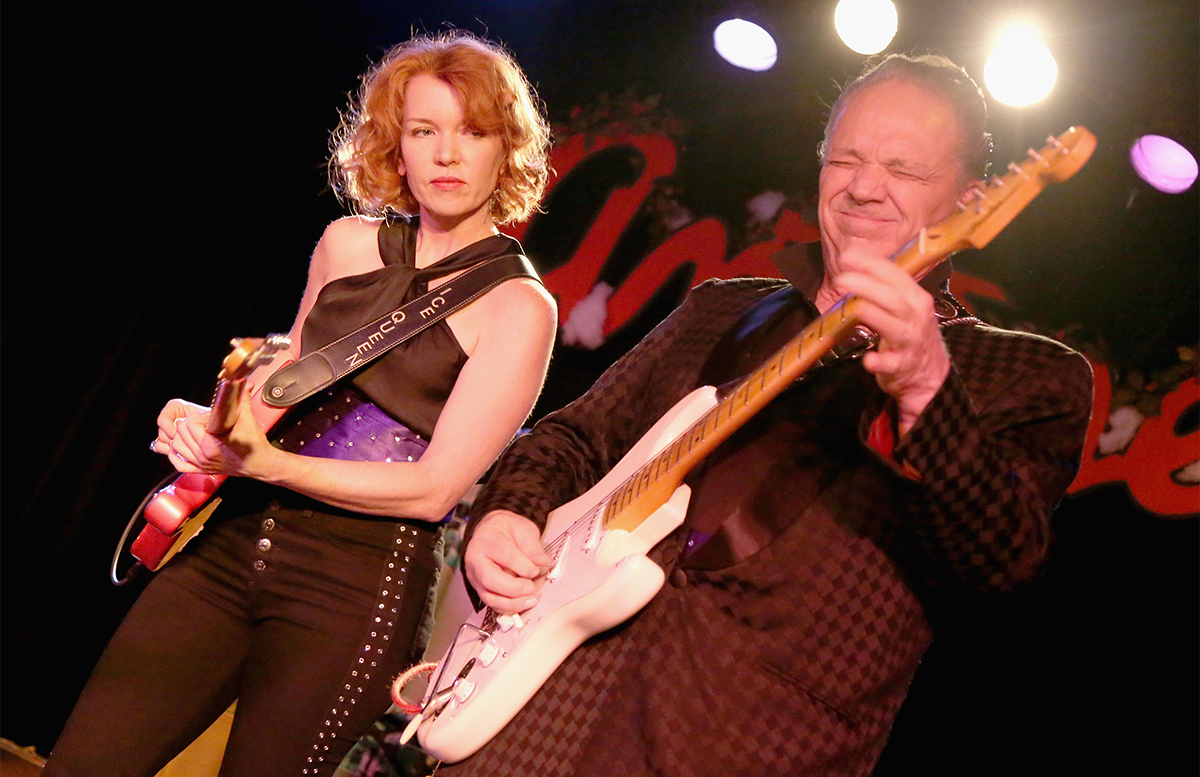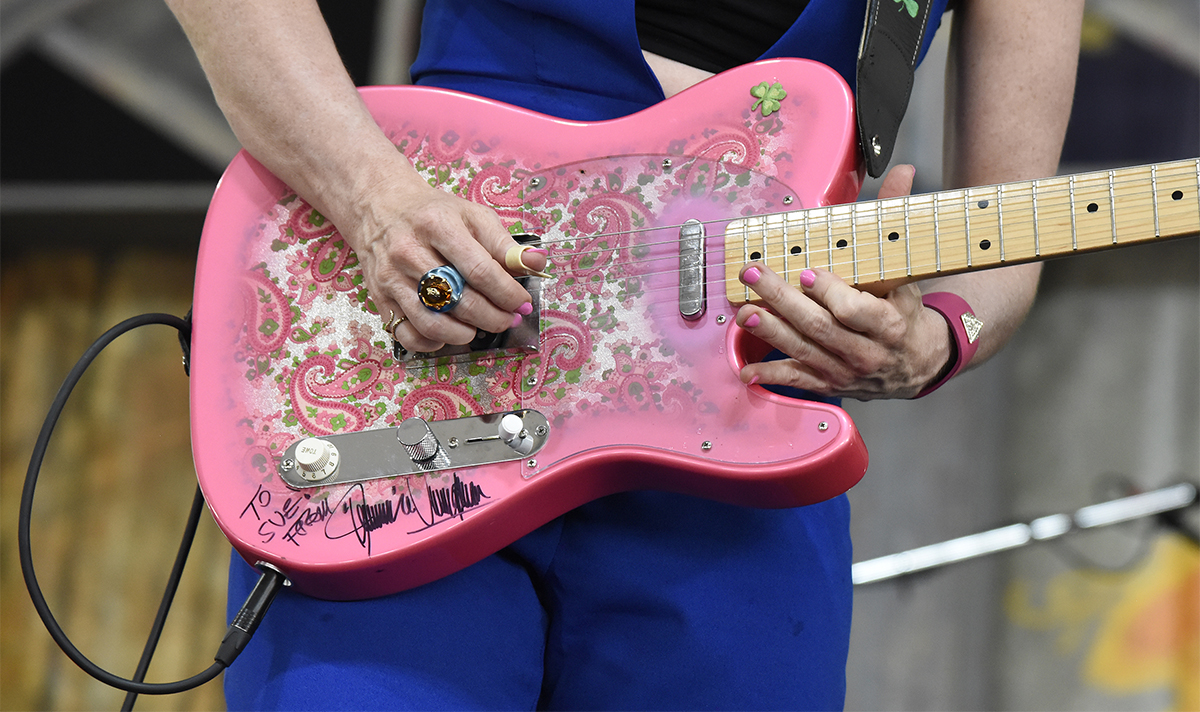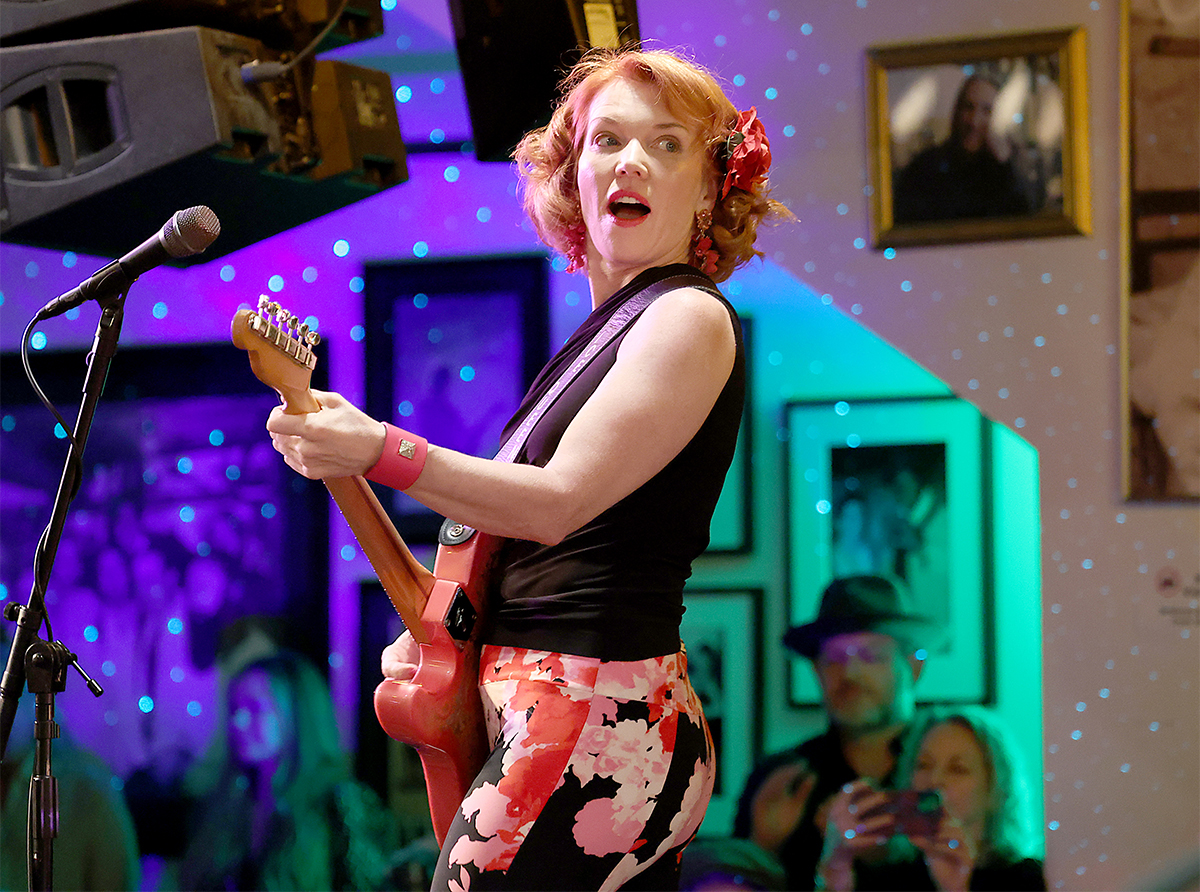"That's where you control your tone. It’s surprising to me that so few people really talk about it." Sue Foley serves up five game-changing blues guitar tips

Sue Foley is renowned for her dynamic electric blues playing. Even so, the Texas blues woman took a stylistic detour on her latest album, One Guitar Woman, by covering a range of styles, including flamenco, classical and Tejano — all on a nylon-string acoustic guitar — while paying tribute to female guitarists like Memphis Minnie, Maybelle Carter and Sister Rosetta Tharpe.
“That’s the great thing about guitar playing,” Foley says. “There’s always a new mountain to climb. I tend to be restless and adventurous in general, and that certainly extends to my guitar playing. I’ve spent a lot of my life playing the blues, and I’ll always return to it, but there’s other kinds of music I still want to learn.”
Such as? “Well, jazz, for sure,” she says. “I can’t play jazz — yet. Harmonically, I’m really challenged. I know if I were to really try to stretch myself, that’s where I would probably try to go.”

Foley recently heard she's received a Grammy nomination for “Best Traditional Blues Album” on behalf of One Guitar Woman. It's her first nomination, and one that is clearly well deserved. She was kind enough to take some time from her busy schedule to offer choice bits of advice for Guitar Player readers.
“There’s a lot of technical tips you can get out there, but to me a big part of guitar playing is mental,” she says. “It’s funny how a lot of players can talk themselves out of trying something new or breaking out of their boxes. Just remember: There’s no rights and no wrongs. Play fearlessly and it’ll all sort itself out.”
1. Ask Yourself Big Questions
“Learning the fundamentals of blues isn’t that difficult, really. Once you familiarize yourself with how the I, IV and V operate in the circle of fifths, you’re in a good place. To me, those are the primary colors you need in order to paint a picture. But what I find fascinating about the blues — and much of it is mysterious, in a way — is just how many ways there are to express yourself using only a few colors.
All the latest guitar news, interviews, lessons, reviews, deals and more, direct to your inbox!
“Blues music asks you some big questions, like, Who am I? What do the blues mean to me? What do I really want to say? It almost dares you to expand your mind and express yourself through your playing. It wants you to go to a deeper place all the time. I find that fascinating. To me, it’s a challenge every time I play, like, How am I going to play this solo and these licks that have been regurgitated countless times for almost 100 years in a way that sounds fresh and alive? How am I going to make them sound like me?
“Asking yourself these types of questions is as important as any kind of technical practice you undertake. I guarantee you, whenever you listen to the greats, you
can bet they’ve asked themselves these questions. I know this sounds kind of spiritual, but when you get down to it, that’s really the essence of the blues. This is music born from a certain time and place, and whenever we play it, we’re paying homage to those spirits and keeping them alive.”
2. Tone Comes From Your Picking Hand

“Of course, you need decent equipment to get a good sound — a good-quality guitar and amp, decent strings that aren’t too old. But the real secret about tone is that it comes from your picking hand. Your fretting hand is doing one kind of work, but for the most part it’s flowing in the same kind of general moment. But your picking hand is where you control your tone. It’s surprising to me that so few people really talk about it.
“When I was coming up, I spent a lot of time watching people’s picking hands. I used to go see Clarence ‘Gatemouth’ Brown a lot, and he had this amazing right-hand technique. He didn’t use a pick, and he did all these really interesting flourishes using all his fingers. It was like each finger was a paintbrush that he’d run across the strings. He could play fast and wild, but when I’d watch his right hand, it was like he put no effort into it. It was all graceful swing. That’s where his tone came from.
“In a different way, there was Albert Collins. He had another great right hand, and his tone could slice your head off. He used his fingers, too, and he played with very light strings. The way he dug his fingers into his strings and pulled the sound from them, it was like sparks flew.
“These kinds of players made an impression on me, and I decided to do away with a flatpick. I use a Golden Gate thumbpick, which I take on and off. Mostly I just play with my fingers so I can feel the flesh on the strings. What I like about that is how intimate it feels — there’s nothing that separates me from each string. I can pluck each string lightly, or I can dig in and get tough. I can run my fingers softly across the strings, or I can hit ’em hard. Playing this way, my tone comes straight from my picking hand, whether I’m going through an amp or not.”
3. If You Play Electric, Try an Acoustic

“It’s easy to let your pickups and amp do a lot of the work for you, but if you want to expand your playing — and if you want a dose of humility — pick up an acoustic from time to time. I started on an acoustic, so I’ve always felt comfortable playing one. The way I generate sound on it is vastly different than on an electric guitar. The sound basically comes from my stomach, which is pressed right against the instrument.
“It’s an unforgiving instrument, which freaks a lot of people out. This is especially true if you’re playing a nylon-string acoustic, which I’ve been doing a lot of lately. Don’t expect it to have the same behavior and response as your electric. It’s a whole different animal. So right away, adjust your expectations and approach. You’re going on a new adventure.
“I would also recommend people either use a thumbpick or an open hand when playing acoustic. There are so many things you can do using your whole hand, and you can experiment in so many ways. But be patient. You’re going to have to take baby steps. I remember my first flamenco guitar lesson: I had been playing for a couple of decades and I thought I was pretty good. I went for my first flamenco guitar lesson, which was open hand, no picks, on a nylon-string acoustic. Between the time signatures and the techniques, it was like I’d never played guitar before. Believe me, it was a good dose of humility.
“The more I played on a nylon-string acoustic, the more I fell in love with its sound and feel. I surrendered to the sound and didn’t fight it. And what was cool was when I found I could use a lot of the right-hand techniques I learned and apply them to my Telecaster playing. My fingers just flew across the strings.”
4. Embrace Your Suckiness
“We all hit a wall with our playing sometimes. I got in a rut myself with my blues playing. I’d been out on the road, and I could play different styles of electric blues, but then I started to think, What else is there? That’s when I started to get into learning flamenco and classical techniques. It was this mountain I wanted to climb, and the only way to do it was through baby steps.
“Whether you want to learn a different style of playing or not, the important thing is that you can’t give into your fear. If you’re trying something new or difficult, you can’t get freaked out if you suck at first. Keep going. In a way, you have to be honest and sort of embrace your suckiness. Say to yourself, Okay, I really suck at this, but I’m not going to stop. Each day you’ll be a little bit better, and one day you’ll be able to say, Hey, I don’t suck anymore.”
5. Speak Through Your Instrument
“Music is a conversation, and if you’re a guitar player, you’re speaking through your instrument. Think about it: If you’re having a conversation with somebody, are you just going to blather all over them and yell at them? That’s not a very effective way of communicating. Better to sit back and wait until it’s your turn to speak, and when you do, try to add something meaningful to the exchange.
“If you try to adopt this attitude, you’re going to find that you don’t have to say everything all at once to make a point. Jimmie Vaughan once told me, ‘Solos are
like little paragraphs in a story.’ That’s a lesson I took with me, and it’s guided me through the years. I don’t need to blather on in my solos. If I have something to say, I’ll say it. If I don’t, I won’t. If I perform a ballad that just requires me to play a melody, is that really so bad? I think not. That’s what I need to add to the conversation.”



